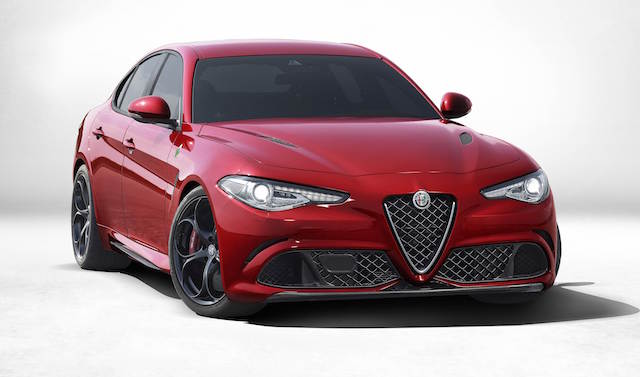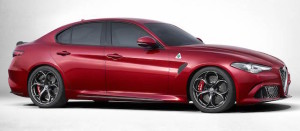
Alfa Romeo has based its new Giulia sedan on a lightweight platform that supports rear drive or all-wheel drive, a radical departure in a model that succeeds the front-drive 159 and the earlier 156.
And it has gone to Fiat-owned stablemate Ferrari for the top-range engine – a 3.0-litre twin-turbo petrol V6 that delivers 375kW and a claimed 0-100km/h sprint time of 3.9 seconds, quicker on paper than the BMW M3 or Mercedes-AMG C63.

The Giulia’s bold new design and high-performance driveline points to Alfa’s much publicised intention to move the 159 successor into sporty executive territory, while offering more individuality than rivals.
“Premium brands now offer the same thing,” Alfa CEO Harald Wester told the European press. “They are interchangeable. If you exaggerate you could say they are boring.
“New Alfa will put the driver back at the centre. Alfa will once again become the perfect fusion of man and machine. Putting the driver at centre stage means they are at the heart of the brand.”
Crucial to the driving experience is a reworked version of the Maserati Ghibli chassis, a claimed 50/50 weight distribution, and a 1500kg kerb weight, thanks to the use of lightweight materials.

These include aluminium for the front and rear mudguards and doors and rear crossmember, and carbon-fibre for the seat frames, bonnet and roof. Alfa says that while the Giulia is light it also has best-in-class torsional rigidity.
The exterior design borrows aspects of executive rivals. There’s a hint here and there of the BMW 3-Series, Alfa 8C coupe, Jaguar XE, Lexus IS F, but the Giulia’s sweeping LED headlights, V-shaped centre grille and prominent air intakes above a carbon-fibre lip spoiler give it a front end all its own. A boot lip spoiler, LED lights and quad tailpipes in a black gloss surround mark the rear design.

Every Giulia rides on a multi-link rear suspension and a double-wishbone front set-up. The Quadrifoglio, or ‘QV’, will get adaptive shock-absorbers, variable driving modes, torque vectoring, and an aerodynamic splitter to aid stability at speed.
Inside, there are familiar Alfa details in the instrument dials and such but the dash and large central screen is new. So too is the taller centre console, the result of the rear-drive tunnel.
